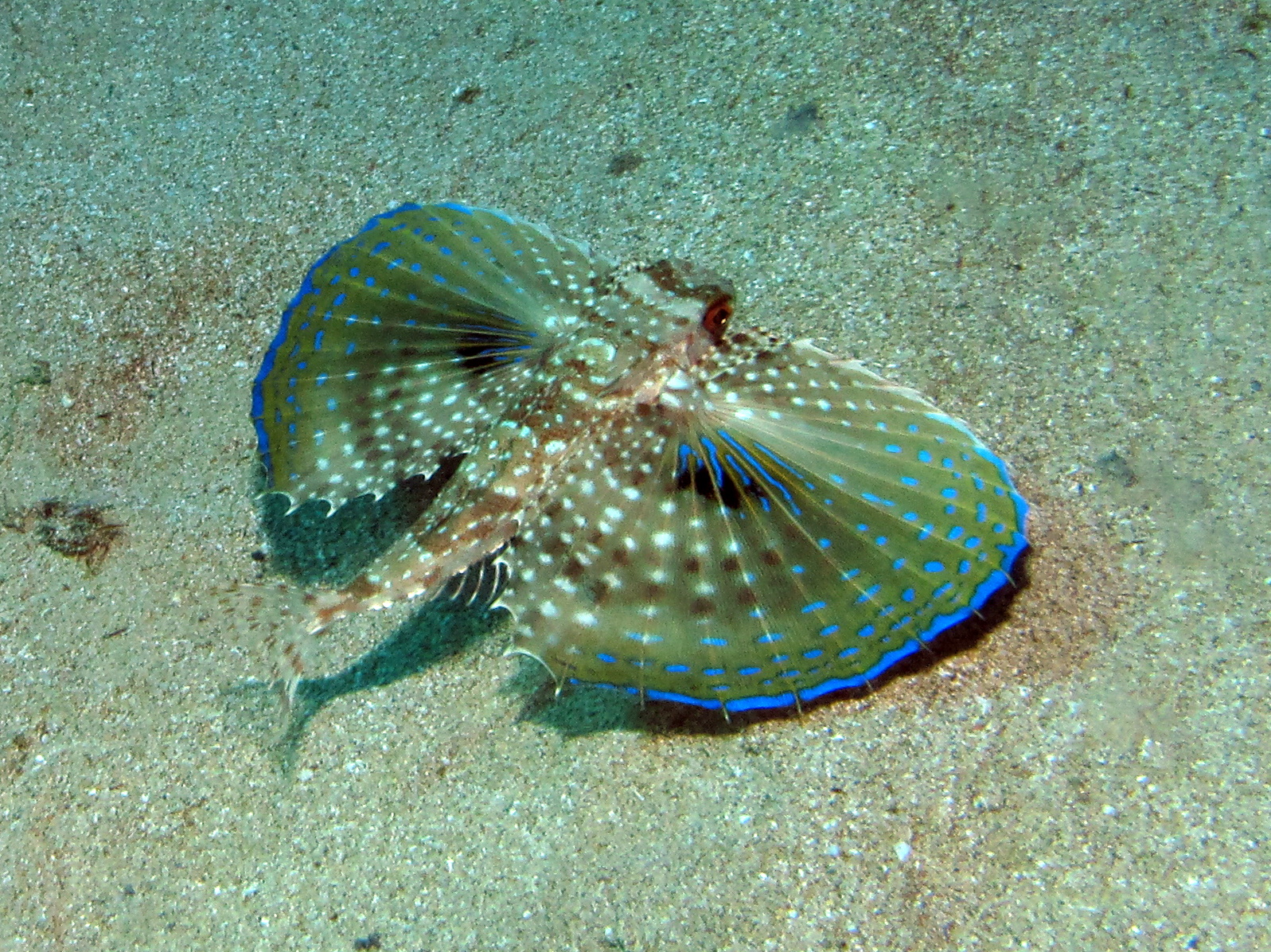Hello ladies and gents this is the Viking telling you that today we are talking about
Flying Gurnard
Also known as the helmet gurnard, grunt fish, and batfish, the Flying Gurnard is a beautiful and peculiar species of fish. It has bright, colorful fan-like “wings” which are its big pectoral fins. The front part of their unusual pectoral fins looks like the foot of an amphibian; thus, the Flying Gurnard may appear like a member of the lizard family. It also has prominently large eyes rimmed with a bright orange color.
The Flying Gurnard’s body is elongated and greenish or brownish in color; it has yellowish or reddish patches. Its blunt and huge head is covered with bony plates or scute-like scales that have sharp keels. It has a single dorsal fin ray found at the nape of its neck. The Flying Gurnard possesses 6 anal soft rays, 7 dorsal spines, and no anal spine.
Diet and Size
- The Flying Gurnard loves crustaceans (crabs and shrimps), bivalves (clams), and small fishes.
- The Flying Gurnard can measure up to 20 inches and weigh up to 4 pounds.
Interesting Facts About the Flying Gurnard
- The Flying Gurnard spreads its semi-transparent wings when it gets excited. Its colorful wings have a phosphorescent electric blue coloration at the edges.
- When looking for prey, the Flying Gurnard “walks” on the sandy ocean floors by using its pelvic fins.
- The Flying Gurnard uses its fantastic pectoral fins or “wings” to fan out or scare away predators.
- Unlike the flying fish, the Flying Gurnards cannot glide nor fly in the air. However, they can glide on the surface of the water for a short period using their widespread pectoral fins.
- The French word gurnard means ‘grunt’. Like the sea robins or true gurnards, the Flying Gurnards produce growling sounds using their swim bladder and drum muscles. Some scientists believe that they use these sounds to communicate with one another.
- The opportunistic feeder fishes like the yellow jack and coney usually accompany the Flying Gurnard.
- The Flying Gurnard is a distant cousin of the venomous scorpionfish; however, the Flying Gurnard is not deadly like the scorpionfish

Comments
Post a Comment